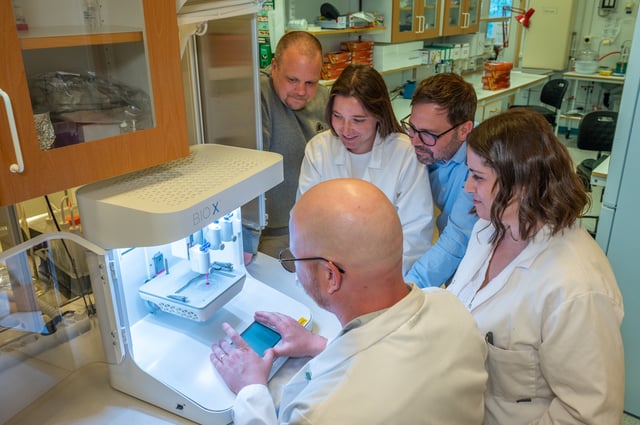Overview
- The biphasic bioink combines fibroblast-seeded porous gelatin beads with a hyaluronic-acid hydrogel crosslinked via click chemistry to allow syringe application and 3D printing.
- In preclinical mouse implants, 3D-printed gel patches persisted, fostered fibroblast survival, secreted key extracellular matrix proteins and supported vascular ingrowth within weeks.
- Complementary hydrogel filaments made of roughly 98% water formed elastic mini-tubes that can be perfused or populated with endothelial cells to tackle vascularization limits.
- The strategy envisions autologous grafting by expanding patient-derived cells from minimal biopsies into printable dermal patches for burns and severe wounds, pending larger-animal tests and scale-up.
- Published August 12 in Advanced Healthcare Materials, the research was led by Linköping University with funding from the European Research Council, Swedish Research Council, Knut and Alice Wallenberg Foundation and Erling-Persson Foundation.
